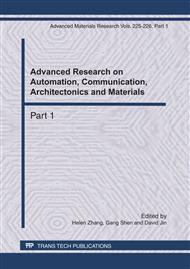p.190
p.194
p.199
p.203
p.207
p.212
p.216
p.223
p.228
Experimental and Study of an Direct-Injection, Single Fuel CNG Engine
Abstract:
In this paper, a single fuel in-cylinder, direct injection compressed natural gas (CNG) engine was presented, which was modified form a 175F gasoline engine, with the 80C196KC single chip microprocessor as the controller. The structure and function of the CNG engine control system, the drive circuits of the injection system, matching its parameters and establishing the control algorithms are introduced. An oxygen sensor was used to adjust the mixture ratio to restore the engine power and reduced the exhaust emission; peak-holding drive circuit of injector was applied to improve its responsibility and spare more electrical energy; high energy ignition system was designed to produce and distribute high enough energy. The result of experimental shows that the power of CNG engine is no lower than 95% of the power of gasoline engien in the most conditions. The exhaust emissions of HC and CO are obviously reduced, compared with the gasoline engine.
Info:
Periodical:
Pages:
207-211
Citation:
Online since:
April 2011
Authors:
Price:
Сopyright:
© 2011 Trans Tech Publications Ltd. All Rights Reserved
Share:
Citation:


